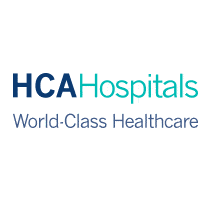HCA, the private healthcare provider, has completed the first stage of implementing a vendor neutral archive from Perceptive.
The provider, which has hospitals in London and Manchester, already has a single instance picture archiving and communications system, which enables clinicians on different sites to see radiology images, but it wanted to have a single archive to hold images from different disciplines.
Kaye Bonython, head of imaging informatics at HCA, said: “We wanted to be able to bring all imaging under one management type, as we add things like cardiovascular work and non-DICOM image management like medical photography and ultimately digital pathology.
“Rather than creating separate silos, we wanted a horizontal layer that managed archiving, distribution and viewing capability.”
A decision to introduce breast tomosynthesis imaging modalities meant that a solution for storing and managing the images was needed within seven weeks. HCA decided to implement a Perceptive VNA initially for use with the breast images, with the potential to roll it out more widely later.
Perceptive’s solution enabled HCA to send images direct from modalities to the archive. Because HCA has a lot of repeat patients, clinicians need access to their priors, so the VNA is also used to pre-fetch old mammogram images to the modality-specific workstations for direct comparison with the new images, said Bonython.
HCA is using Visage software, originally purchased for 3D work within PACS, to recall the tomosynthesis images to PACS stations or modality-specific workstations anywhere in the organisation.
An unexpected benefit of the VNA, said Bonython, was that it had improved the previously labour-intensive workflow in breast imaging.
“For people who had modality-specific workstations, who in the past had to do a manual pre-fetch of historic data, now within the VNA, it's an automatic pre-fetch once they order the examination.”
In the next 12-15 months, HCA plans to roll out the VNA to other types of images, beginning with cardiology and moving on to clinical photography and digital pathology.
But other image types will follow, said Bonython. “A lot of our referring physicians have consulting rooms on our premises and we want to offer anything they can do, including retinal imaging, dermatologists capturing images and people doing reconstructive work where they need before-and-after photographs.”
Bonython said that the VNA would improve efficiency through providing clinicians with faster access to any image they needed to see.
“Most of our users will come in, walk up to a computer, log on, and when they say ‘I want to see a chest X-ray from 2011’ they don't care which bucket that information is in, they just want to know they can see it when they need to.”
HCA also has ventures with the NHS and Bonython said she hoped that the VNA implementation would enable the organisation to share images more easily with NHS clinicians.

